Weekly birding round-up: 10 - 16 Oct
Both flavours of autumn were available to savour in recent days, with new birds from east and west alike found as the week wore by. Lingering rarity quality remained in Britain and Ireland, while westerlies bore a decent late arrival of scarce waders to gild the weekly lily.
Islay (Argyll & Bute) may not have enjoyed a huge number of Nearctic passerines down the years, but those that have found the island have been of the highest quality - American Redstart (Britain’s second record), Brown-headed Cowbird (Britain’s first record), and White-crowned Sparrow.
To that impressive cast can be added another star this week – a fine Veery, found on the island at Ellister on 13th, and still present there on 14th.
Present, but prone to playing somewhat hard to get, vanishing altogether for periods of time on both days. Frustratingly, given this was a first for Argyll & Bute…
A county with an illustrious record for vagrant birds from all points of the compass, but without a Lanceolated Warbler hitherto, Cornwall put that omission right this past week with a bird trapped and ringed at the mighty Nanjizal Valley on 14th.
A species that’s a needle in a haystack at the very best of times in the sparsely vegetated circumstances of Shetland, this was always likely to be a transitory affair and not one for the county listers. Right place, right time, and all that.
The lanceolated warbler was a nice surprise today on an otherwise slow ringing day at Nanjizal
— rudryrover.bsky.social (@rudryrover.bsky.social) 14 October 2025 at 22:10
[image or embed]
And speaking of being in the right place at the right time, hats off to those who correctly anticipated where the immensely mobile White-throated Needletail was going to crop up in the morning of 14th… Understable euphoria all round!
Before its appearance at Helmsdale Harbour (Highland & Caithness) on 14th, the touring bird had already brought considerable further delight elsewhere, putting in appearances at Scarborough (North Yorkshire) on 10th, and Brora (Highland & Caithness) on 13th, with a probable sighting also coming of it heading north past St Mary’s Island (Northumberland) on 11th.
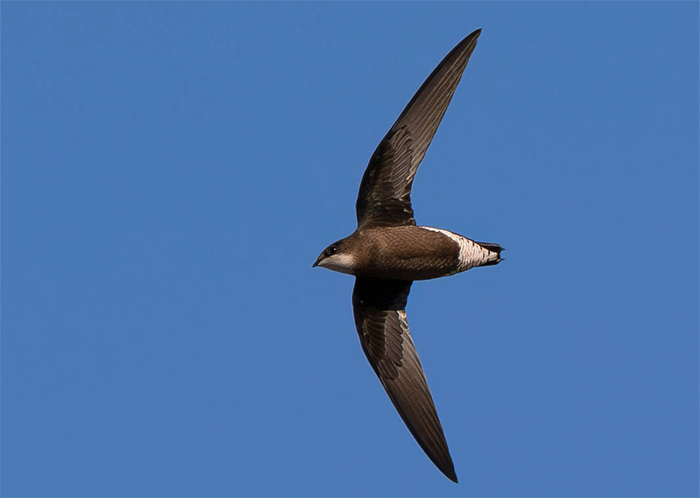
On 15th a sighting in the morning of a probable at Loch Hollistan (Highland & Caithness) prefaced the bird back near Helmsdale again an hour later, seen powering north over Gartymore.
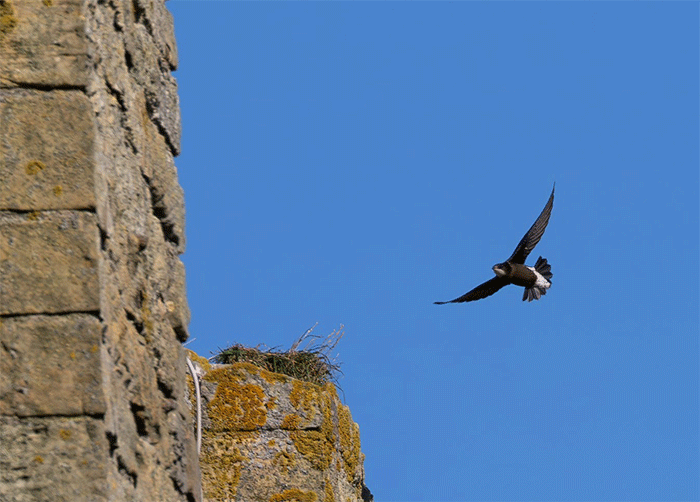
Bird of the year, surely, for many?
For those fortunate to find themselves on Scilly this past week, the ongoing presence of England’s first Mourning Dove was a daily delight, the bird in question remaining on St Agnes on 10th-16th. Given how long it’s taken for England to land a bird to call its own, one suspects the next might be some time in the coming, so this amounts to a golden opportunity for anyone with a yearning for a Mourning Dove but an aversion to the effort involved in twitching one on a Scottish isle.
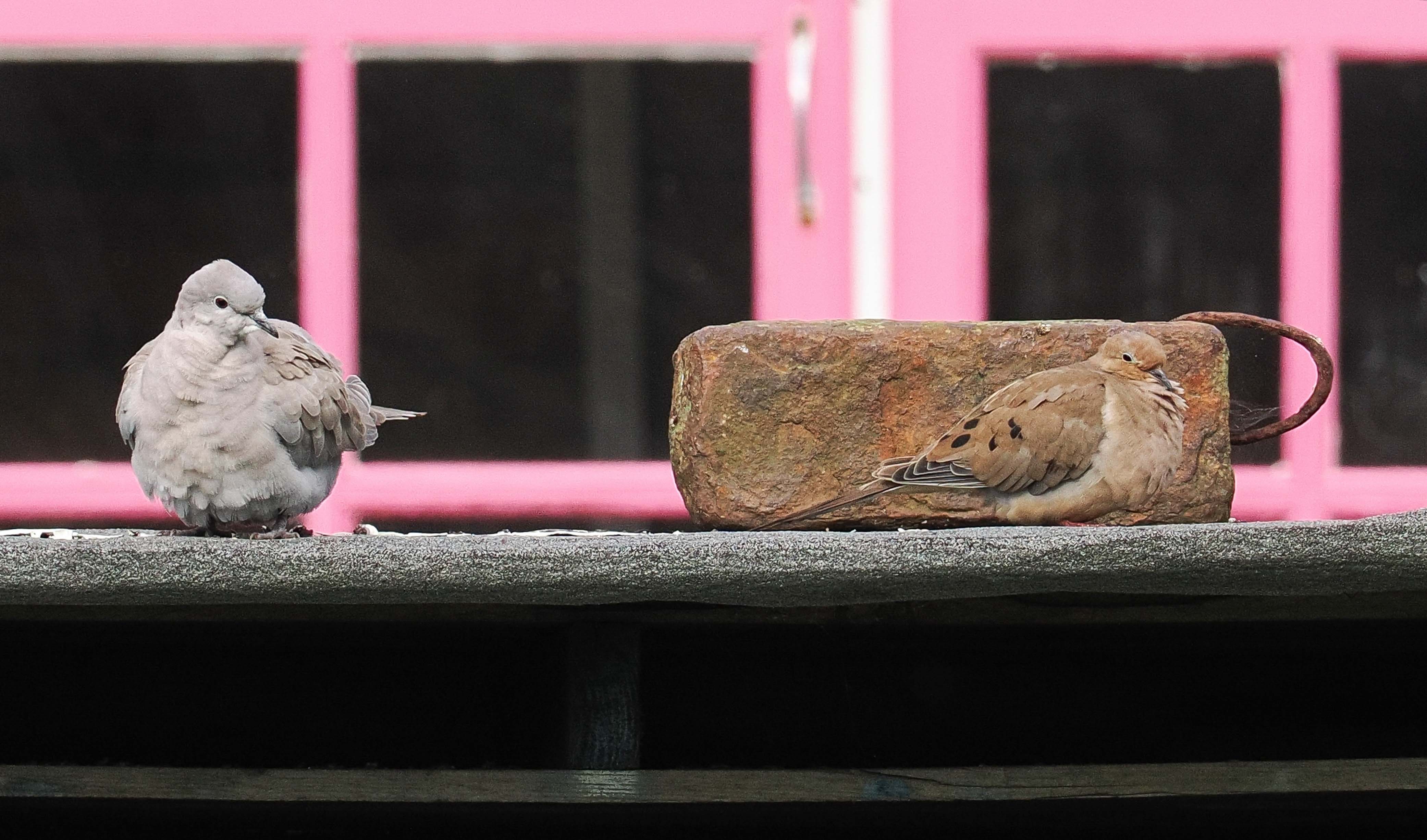
Significantly more peaceful times on the seabird front this week, with the honourable exception of Pomarine Skua, which enjoyed something of a late flurry with around 325 birds in all seen during recent days, and a peak count of 47 from Lewis (Western Isles) on 12th.
Long-tailed Skua were a different kettle of fish altogether, with comparatively few birds logged lately – singletons in Kent off Tankerton on 10th, at Porthoustock (Cornwall) on 12th, Hornsea (East Yorkshire) on 13th, and in Lincolnshire on 15th at Sutton-on-Sea and Wolla Bank; and two seen on 13th at Minsmere RSPB (Suffolk).
Numbers of Leach’s Petrel fell through the floor, with barely a handful noted – single birds seen on 10th at Slimbridge WWT (Gloucestershire); on 11th inland at Blithfield Reservoir (Staffordshire), and at sea between Lochmaddy and Uig (Western Isles / Highland & Caithness); on 13th at Spurn (East Yorkshire) and Reculver (Kent); on 14th also in Kent from Birchington; and on 15th off Kilnsea (East Yorkshire).
Large shearwaters remained a relatively scarce commodity, with a mere 110 Cory’s Shearwater seen in Britain and Ireland as a whole, half of which were noted from Brandon Point (Co.Kerry) on 10th; and some 600 Great Shearwater, with 150 from the Scillonian on 11th and 300 from a Scilly pelagic on 15th the best tallies of their kind.
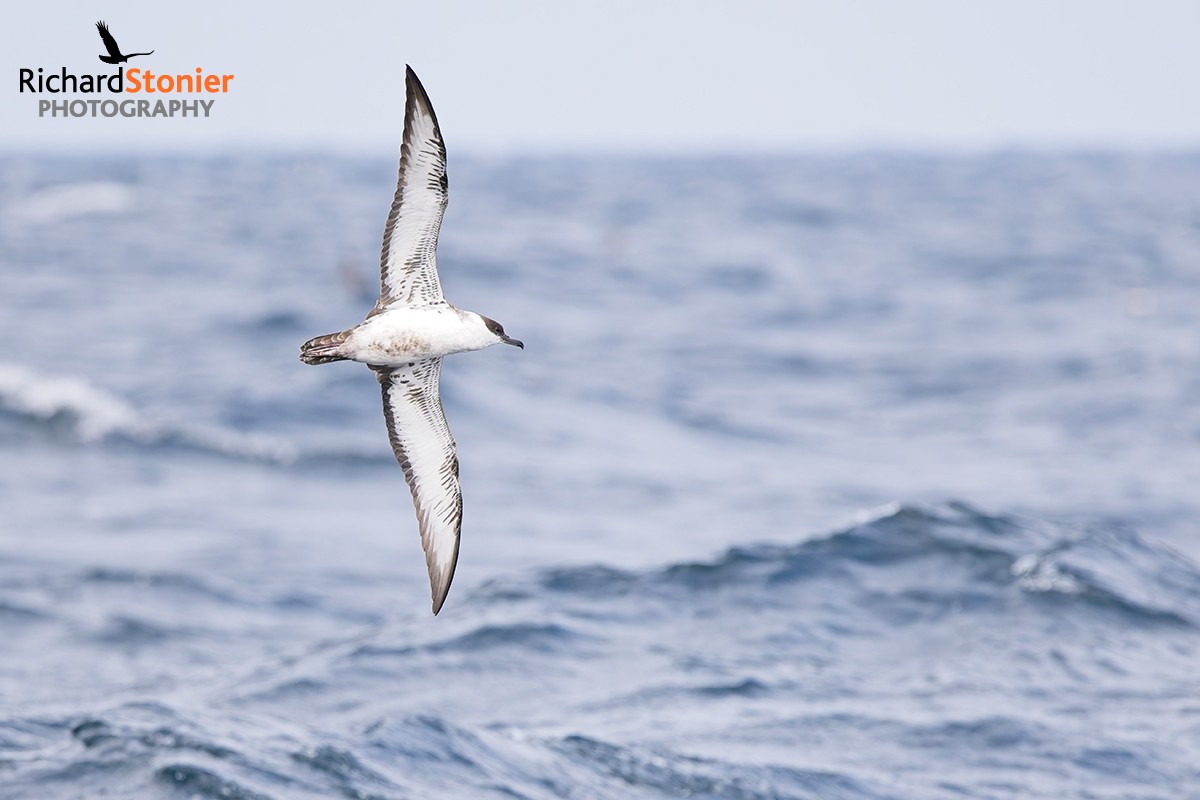
Barely 20 Balearic Shearwater were logged this past week, Dorset’s Portland accounting for most of them – peak count there being a mere seven birds on 11th and 13th.
A White-billed Diver was seen off Out Head (Fife) on 14th-16th.
Last but not least, an adult Pacific Diver was at Crookhaven (Co.Cork) on 15th-16th.
On to long-legged beasties, and there were still heaps of Glossy Ibis out there for the finding country-wide…

In Devon a Night Heron was once again to be seen at Otter Estuary on 11th.
A Corncrake was found on Unst (Shetland) on 15th.
The honkers and quackers were getting ever more varied this past week, with new faces in both camps to be seen, and some old favourites continuing their tenure too.
Starting with The Goose Formerly Known As Canada, a probable interior Todd’s Canada Goose was seen on Islay (Argyll & Bute) on 11th, with a confirmed bird there on 15th; another in Argyll & Bute on 15th on Tiree; a bird also on 15th in Lancashire & North Merseyside at Banks; and another at Beal (Northumberland) on 16th; hutchinsii Richardson’s Cackling Goose were seen on North Uist (Western Isles) on 11th-13th still, Islay on 13th, and at Lissadell (Co.Sligo) on 15th; and a minima Ridgway’s Cackling Goose at Walberswick NNR (Suffolk) on 10th.
In Lothian, the recent Lesser White-fronted Goose was seen again this week, on 10th-11th near Whitekirk; and a further sighting came on 11th at Hule Moss (Borders).
The recent Ross’s Goose continued to linger with the Pink-footed Geese at Marshside RSPB (Lancashire & North Merseyside) on 10th-16th.
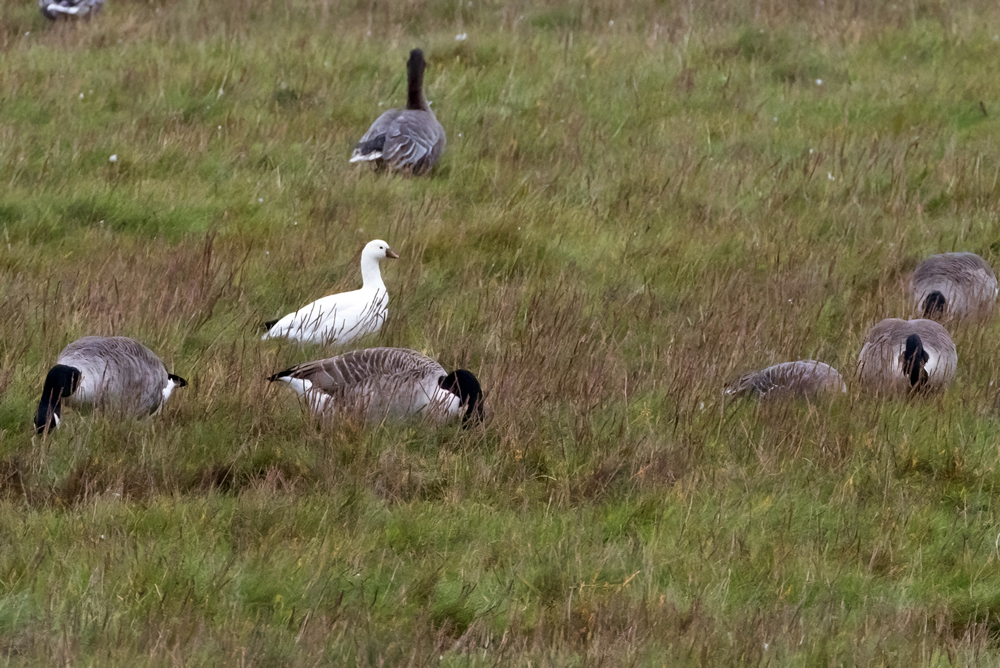
The recent Snow Goose remained in Highland & Caithness near Beauly on 10th-12th; and another was seen in Cumbria at Old Sandsfield on 15th.
A Black Brant appeared on the north Kent coast at Graveney Marshes on 11th.
The quackers start with much more rarified fare, in the form of a female Baikal Teal found at Abbotsbury Swannery (Dorset) on 14th-16th.
Up in Shetland the recent Blue-winged Teal continued to linger at Loch of Spiggie on Mainland on 10th-13th.
After an absence from the news for some time, this week heralded the return of Green-winged Teal to the dailies, with birds found on 15th at Welney WWT (Norfolk) and Loch Fleet (Highland & Caithness), the latter bird still present on 16th.
American Wigeon lingered at Bishop Middleham (Co.Durham) on 10th-15th, and Hayle Estuary RSPB (Cornwall) on 10th. Further birds were seen this week at Newshot Island (Clyde) on 11th-16th, Skyreburn Bay (Dumfries & Galloway) on 12th, and on Sanday (Orkney) again on 14th. A possible was present at Hornsea Mere (East Yorkshire) on 11th.
Around 35 Ring-necked Duck were logged during the week, with several sites again enjoying multiple individuals. Parties of four were seen on Inishbofin (Co.Galway) on 12th-16th still, at Loch of Skene (Aberdeenshire) still on 14th, and on Lough Gara (Co.Sligo) on 15th; three remained on Achill Island (Co.Mayo) on 10th-12th; and duos were noted at Lough Yganavan (Co.Kerry) on 11th, Tacumshin (Co.Wexford) on 11th, Hellifield Flash (North Yorkshire) on 13th-14th, and Loch of Wester (Highland & Caithness) on 14th.
The recent drake Lesser Scaup remained at Gouthwaite Reservoir (North Yorkshire) on 10th-16th; further drakes were seen lately at Portmore Lough RSPB (Co.Antrim) on 11th, and on Lewis (Western Isles) on 14th-16th. A probable female was on Blagdon Lake (Somerset) on 10th.
A Ferruginous Duck was reported from Ouse Fen RSPB (Cambridgeshire) on 14th.
A Surf Scoter was seen from Inch (Co.Kerry) on 12th. The drake White-winged Scoter remained in Lunan Bay (Angus) on 13th-14th, and the second-winter drake in Lothian at Musselburgh again on 15th; and a drake Black Scoter was tracked along the north-east coast between Hartlepool Headland (Cleveland) and Church Point (Northumberland) on 14th before being seen off Goswick (Northumberland) on 16th.
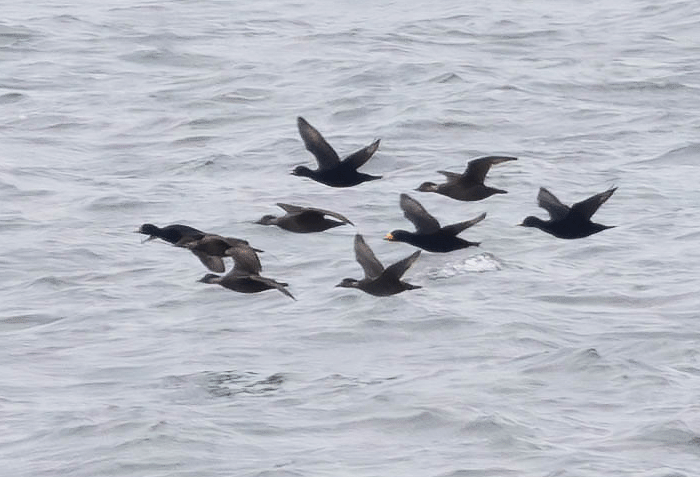
Last but emphatically far from least, Ireland’s first two Harlequin Duck remained at Magheraroarty (Co.Donegal) on 10th, with one still present there the following day. One of them settled off Bloody Foreland (Co.Donegal) on 11th-13th; and one was seen in Co.Donegal on 15th at Carrickboyle.
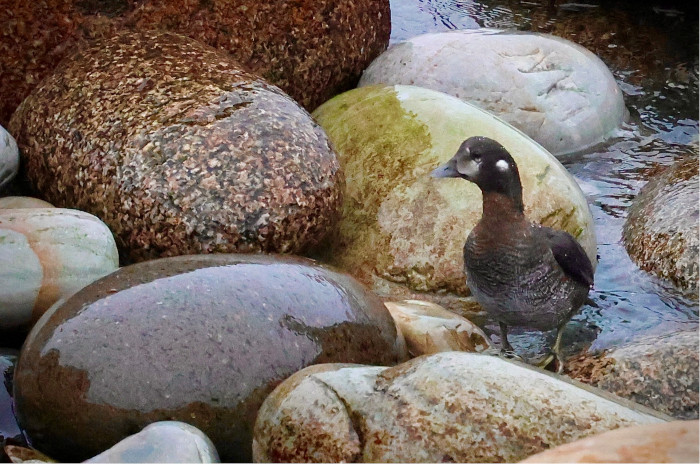
The weekly waders were very much dominated this week by an exceptional arrival of White-rumped Sandpiper in our midst, with some sites enjoying significant aggregations of their kind – eight were seen at Belvide Reservoir (Staffordshire) on 11th; numbers built at Rosslare Back Strand (Co.Wexford) from five on 10th to nine on 12th; four were present at Inch Island Lake (Co.Donegal) on 14th, with three still there the following day; four at Tacumshin (Co.Wexford) on 15th grew to five birds on 16th; three were seen at Myroe Levels (Co.Derry) on 12th; and three at Montrose Basin (Angus) on 16th. Overall, some 40 birds were seen spread across Britain and Ireland.
Leicestershire’s Baird’s Sandpiper at Rutland Water remained something of an inland superstar this week, showing well there on 10th-14th. Additional birds were seen in recent days at Annagh Marsh (Co.Mayo) still on 10th-15th, on North Uist (Western Isles) on 10th-13th still, and at Colliford Lake (Cornwall) on 13th-15th.
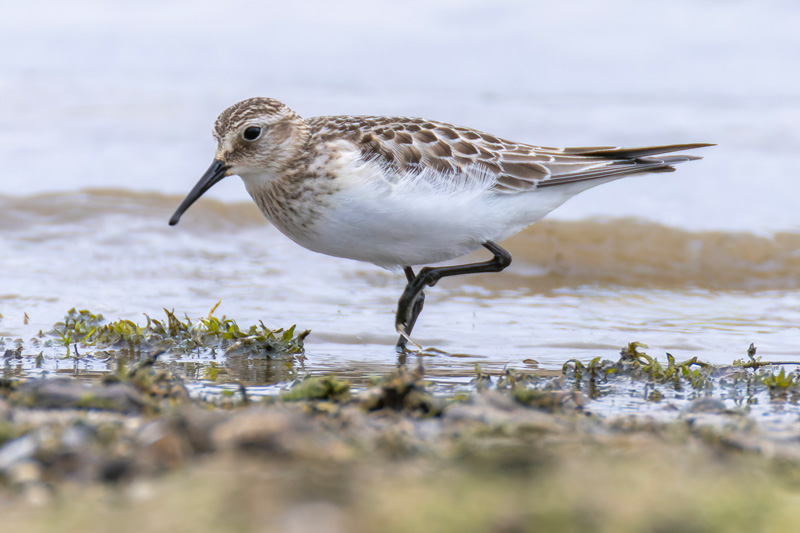
Co.Wexford was the place to be for Semipalmated Sandpiper this week, with two birds seen at Rosslare Back Strand on 10th-12th, and The Cull on 12th, and one at Tacumshin on 16th again; single birds were also seen in Ireland at Black Rock Strand (Co.Kerry) on 13th-15th, and Ballyheigue (Co.Kerry) on 14th.
The resident Western Sandpiper remained in Ayrshire at Maidens on 11th-15th.
Our only Temminck’s Stint lately was one inland at Wilstone Reservoir (Hertfordshire) on 10th-12th.
Numbers of Pectoral Sandpiper dropped somewhat, with a dozen seen across Britain and Ireland as a whole this week. Duos were noted at Lady’s Island Lake (Co.Wexford) on 13th, and Lough Beg (Co.Derry) on 14th-16th.
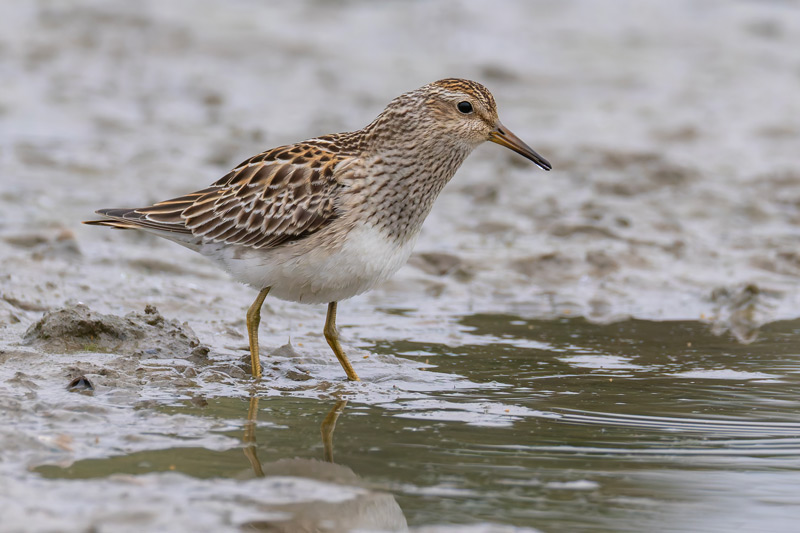
The Spotted Sandpiper remained on St Agnes (Scilly) on 10th-15th.
The juvenile Marsh Sandpiper remained nailed down at Musselburgh (Lothian) on 10th-16th.
Four recent Lesser Yellowlegs showed no signs of moving on any time soon – in Cambridgeshire one remained at Etton Maxey Pits on 10th-15th; the individual remained at Wootton Flood Storage Lagoon (Norfolk) on 10th-15th; and in Ireland, birds remained at Lurgangreen (Co.Louth) on 11th-12th, and at Tacumshin (Co.Wexford) on 10th-16th. An additional bird was found in Cornwall on 15th-16th just outside Truro.
Tacumshin (Co.Wexford) held onto its Long-billed Dowitcher on 10th-16th; and another was at Montrose Basin (Angus) on 15th-16th.
A possible Great Snipe was noted at Blakeney Point (Norfolk) on 13th.
A dozen American Golden Plover were logged in Britain and Ireland this past week, with two birds notable at Carrahane Strand (Co.Kerry) on 13th still.
A Dotterel was found on 15th on Lewis (Western Isles).
A Red-necked Phalarope held on at Nosterfield LNR (North Yorkshire) on 10th-11th; and another was seen on 11th at Snettisham CP (Norfolk).
Lastly, a handful of Grey Phalarope were seen this week – one at Woolston Eyes NR (Cheshire & Wirral) on 10th-11th; one off Fair Isle (Shetland) on 11th; a bird at Eaglesfield (Cumbria) on 12th; birds off South Uist (Western Isles) on and North Ronaldsay (Orkney) on 14th; and on 15th, Fair Isle (Shetland) and Flamborough (East Yorkshire).
The gulls this week commence with a small flurry of Bonaparte’s Gull - on 12th in Highland & Caithness, three were seen at Castlehill, and four at Dunnet Bay, the latter site retaining three birds on 13th, and one on 14th-15th. The adult remained at Ballyconneely (Co.Galway) on 11th-14th.
The second-winter Laughing Gull remained at Trabeg (Co.Kerry) on 11th, with another sighting coming from Rosscarbery (Co.Cork) on 13th.
The here today gone tomorrow adult Franklin’s Gull in Orkney put in another appearance on Westray on 15th.
Sightings of Sabine’s Gull faded to almost nothing this week, with just a few birds logged – on 10th from the Scillonian and at Nybster (Highland & Caithness); on 12th at Castlehill (Highland & Caithness); on 12th, 13th, and 16th off Lewis (Western Isles); and on 14th at Blakeney Point (Norfolk). Additional birds on 16th were seen at Lossiemouth (Moray), Worm’s Head (Glamorgan), and inland at Wraysbury Reservoir (Berkshire).
A possible Ring-billed Gull was seen in Cornwall on 15th at Newlyn.
White-wingers came in the form of Glaucous Gull on Fetlar (Shetland) on 12th, off St Mary’s Island (Northumberland) on 14th, at Girdle Ness (Aberdeenshire) again on 14th, on Orkney Mainland at Stenness again on 15th-16th, and on 16th at Cley and Weybourne (Norfolk); Iceland Gull on St Kilda (Western Isles) on 11th, and Lewis (Western Isles) on 13th, with a probable seen on 15th at Great Cowden (East Yorkshire); and an adult Kumlien’s Gull at Cunningsburgh (Shetland) on 14th.
The best of the week’s raptors were once again the two Northern Harrier, a male and a juvenile, still present at Tacumshin (Co.Wexford) on 10th-13th, the latter individual at least still present there on 15th.
In Glamorgan the female Pallid Harrier remained at Llanrhidian Marsh on 10th-16th; and on 15th, a juvenile was seen in Gloucestershire at Severn Beach.
Finally, the Red-footed Falcon remained in Norfolk at Great Yarmouth on 10th-12th.
The passerines commence once again with Nearctic flair – foremost of which was the Northern Parula still present at Firkeel Glen (Co.Cork) on 10th-14th.
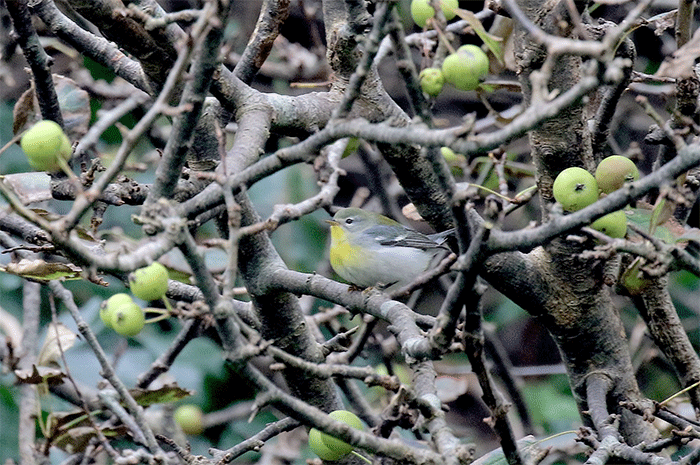
In Shetland, the recent Blackpoll Warbler remained on Unst, being seen on the isle on 10th-16th; a further bird was found on Barra (Western Isles) on 16th, a new bird for the island.
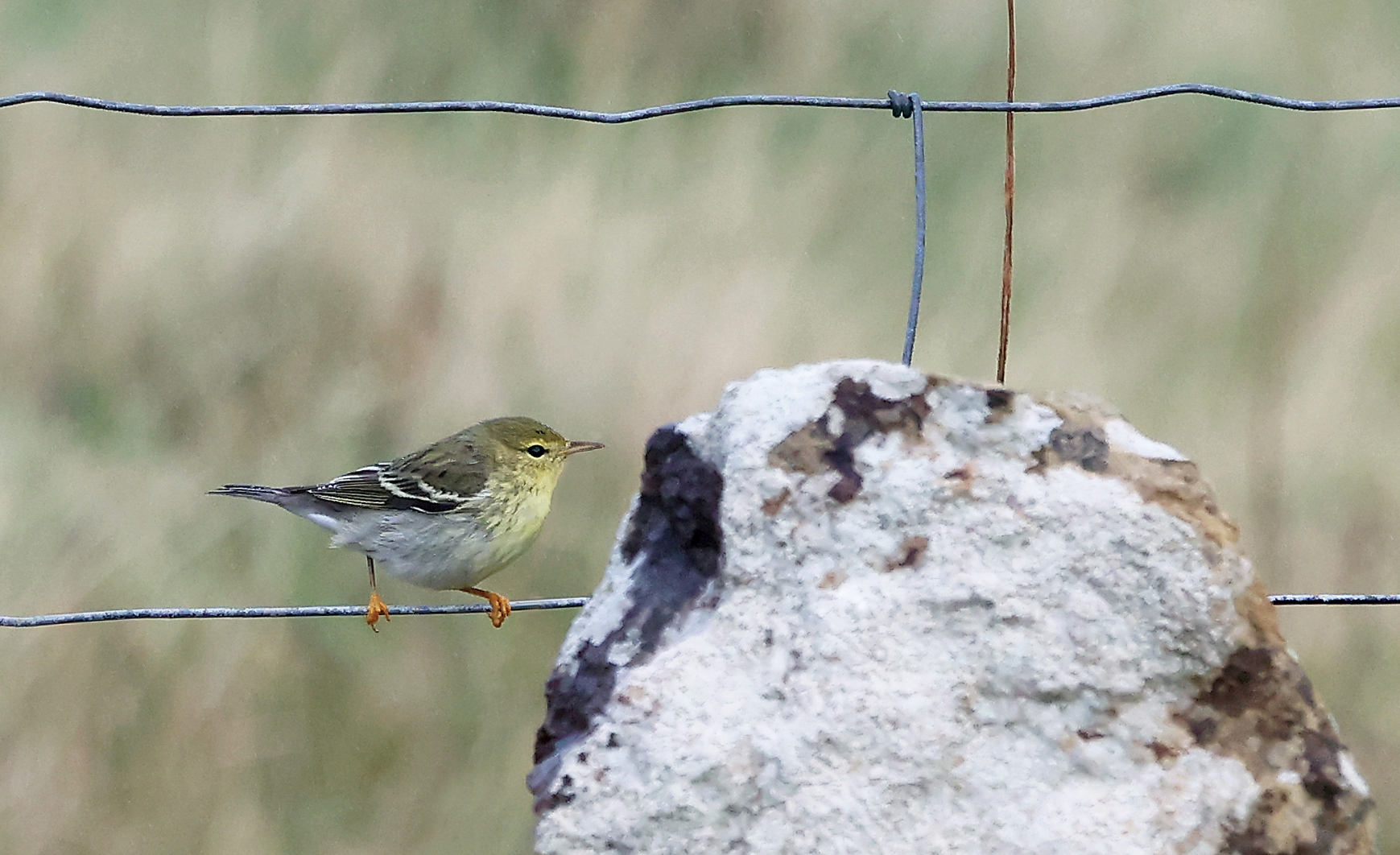
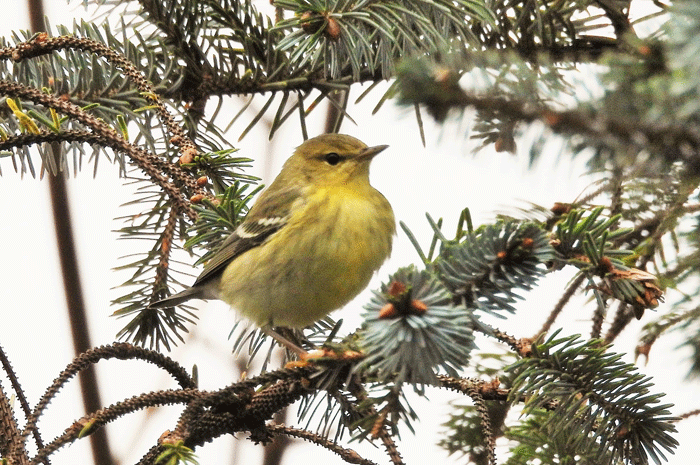
A Red-eyed Vireo was seen on Arranmore Island (Co.Donegal) on 11th.
Recent American Pipit remained this week in Ireland at Clahane Strand (Co.Clare) on 10th-12th, and on Inishmore (Co.Galway) on 10th-16th; and on Scilly on St Agnes on 10th-16th.
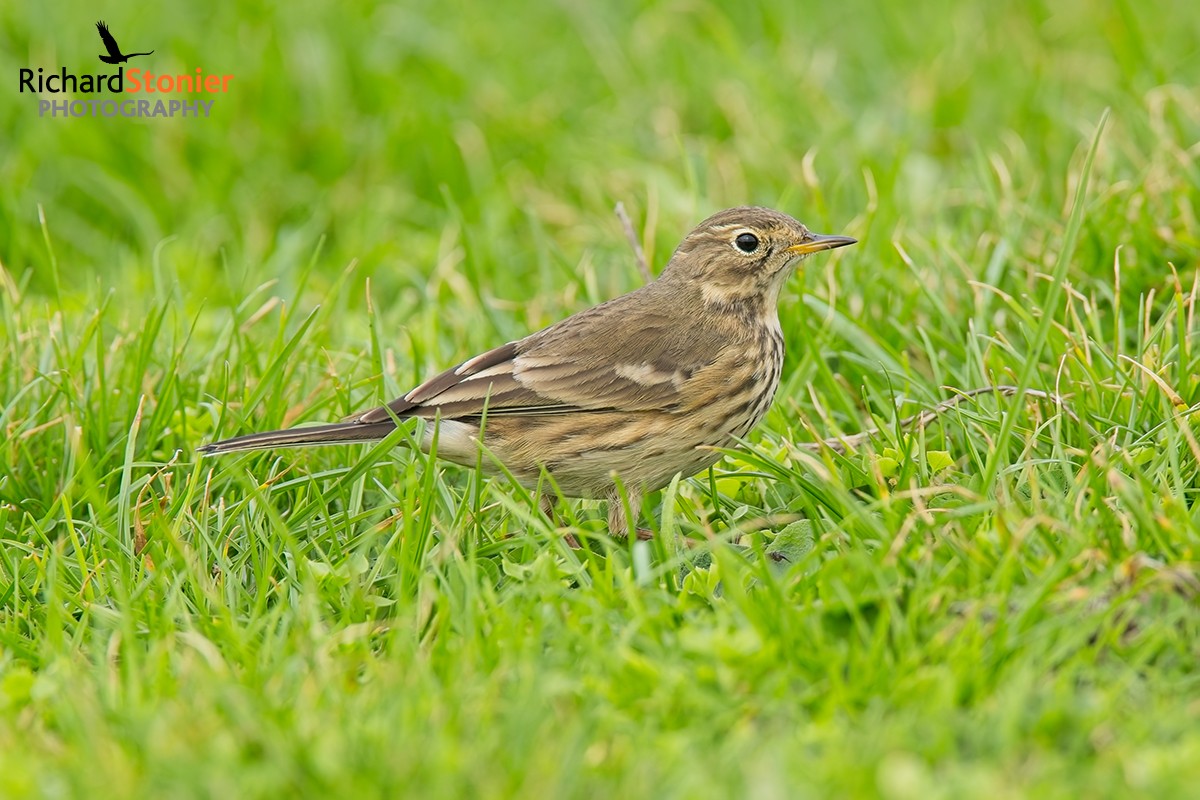
The Grey-cheeked Thrush was still to be seen on Tory Island (Co.Donegal) on 10th-12th.
For birders in Shetland, the utter delight that was the recent Siberian Thrush remained at Asta on 10th.
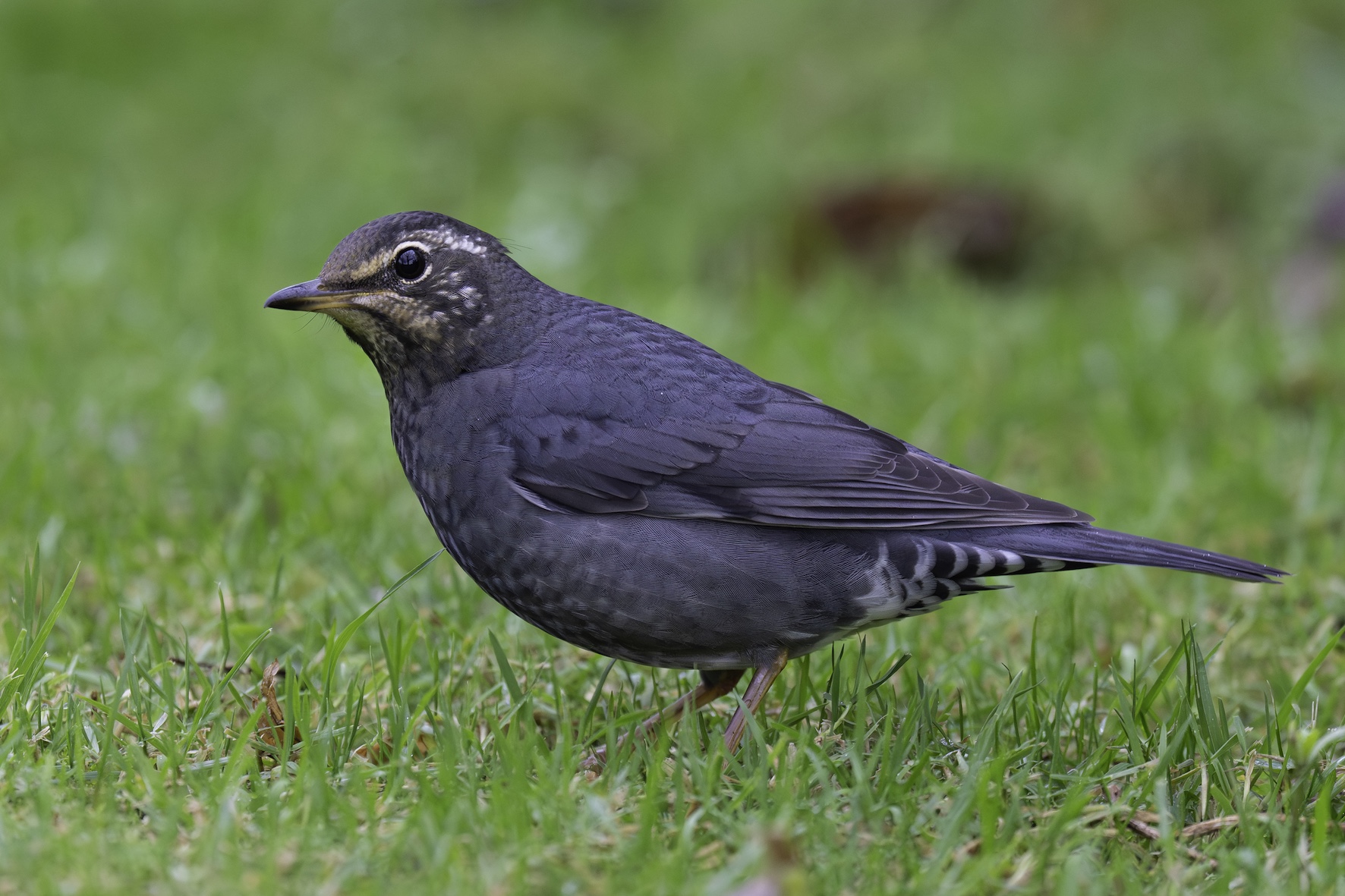
Co.Cork gave us a flyover Red-throated Pipit at Allihies on 10th, and a Tawny Pipit on Cape Clear on 11th. A Red-throated Pipit was present on Bryher (Scilly) on 16th, and a probable Tawny Pipit was seen on St Mary’s (Scilly) on the same day.
A Richard’s Pipit was at Porthgwarra (Cornwall) on 12th; further birds on 14th at Reculver (Kent), on Fair Isle (Shetland), and at Porth Neigwl (Gwynedd); and one in Norfolk at Warham Greens on 16th.
Lundy (Devon) was graced by an Olive-backed Pipit on 15th-16th, with a further bird on Holy Island (Northumberland) on 16th.
An Eastern Yellow Wagtail was found on St Kilda (Western Isles) on 15th.
Shetland accounted for two Bluethroat lately – on Unst on 11th-16th, and Out Skerries on 12th.
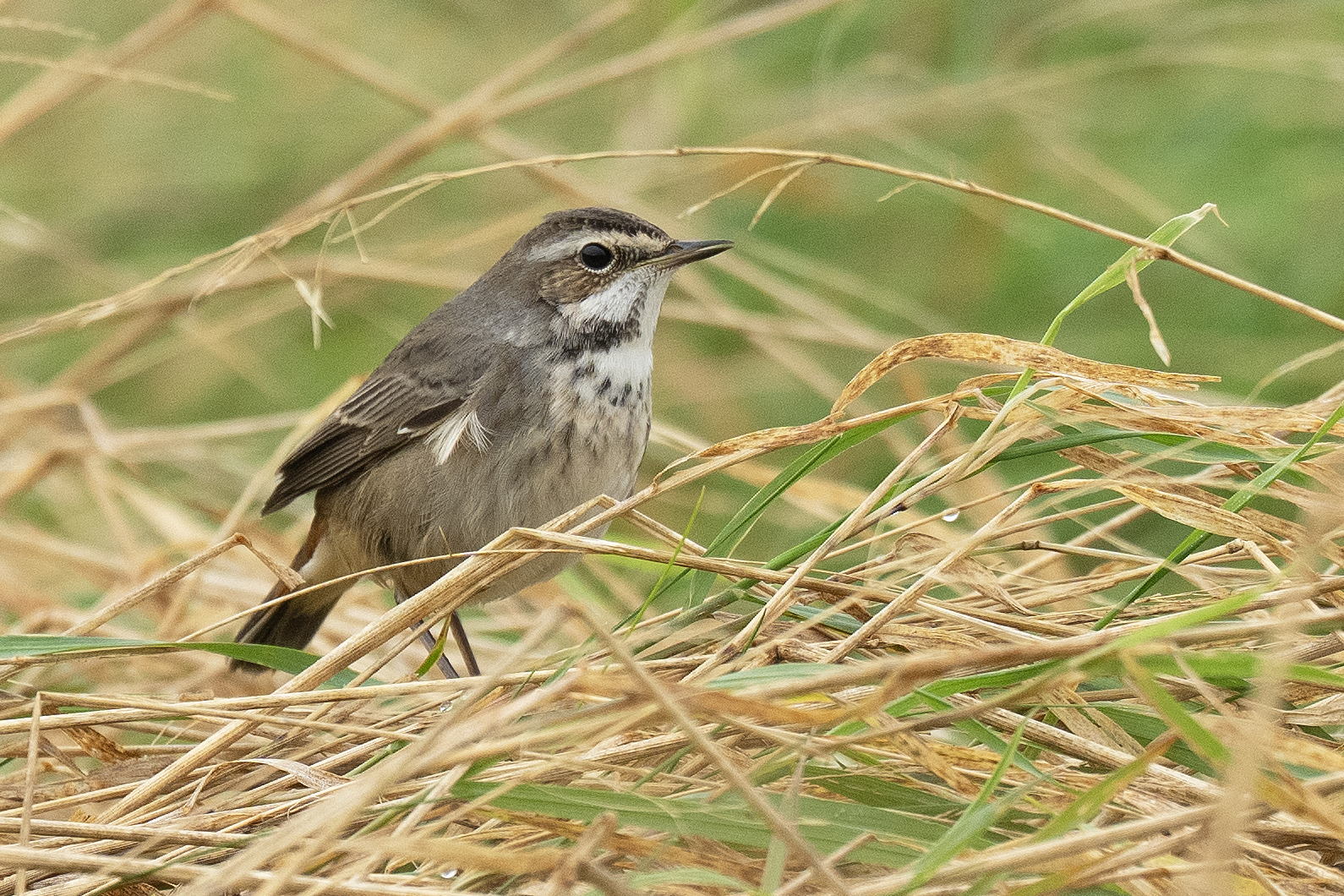
A Red-flanked Bluetail was found on Holy Island (Northumberland) on 13th, and another in Norfolk at Wells Woods on 15th.
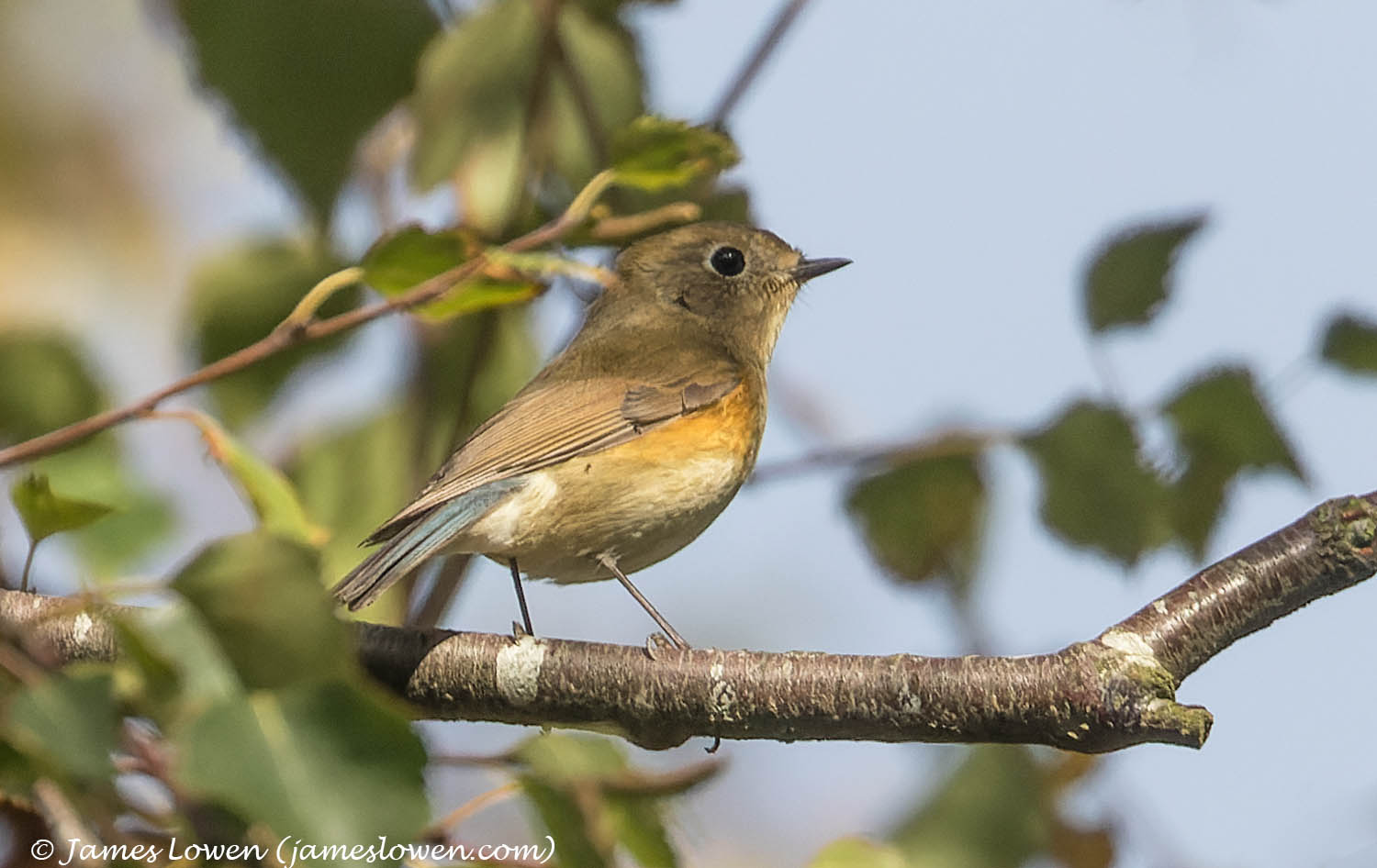
A shade over 20 Red-breasted Flycatcher were logged this week, with two present on Barra (Western Isles) on 14th rising to four present by 16th, and two on St Martin’s (Scilly) on 16th.
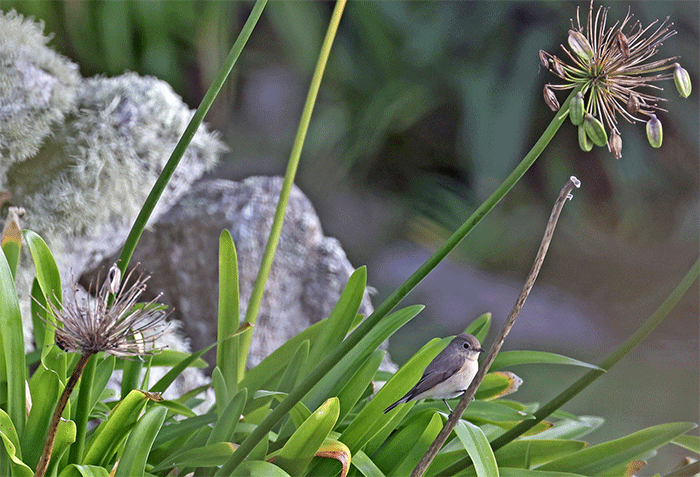
A Siberian Stonechat was present at Walshaw Dean Reservoirs (West Yorkshire) on 11th-12th; and a probable at Winterton (Norfolk) on 13th.
The Isabelline Wheatear remained at Ballinclamper (Co.Waterford) on 10th.
The fine first-winter Brown Shrike remained just outside St David’s (Pembrokeshire) on 10th-12th.
In Suffolk the glorious adult male Turkestan Shrike remained at Dunwich Heath NT on 10th-11th.
Red-backed Shrike meanwhile were noted at Portland (Dorset) on 13th-15th, on Skokholm (Pembrokeshire) on 14th, and on Barra (Western Isles) on 15th-16th.
Marking the passage of autumn, Great Grey Shrike were found on 13th at Winterton North Dunes (Norfolk); on 13th-14th on Holy Island (Northumberland); and on 14th-16th at Worth Marsh RSPB (Kent).
A Hoopoe lingered on St Agnes (Scilly) on 10th-12th, and a further bird was in Co.Cork at Rossbrin on 15th.
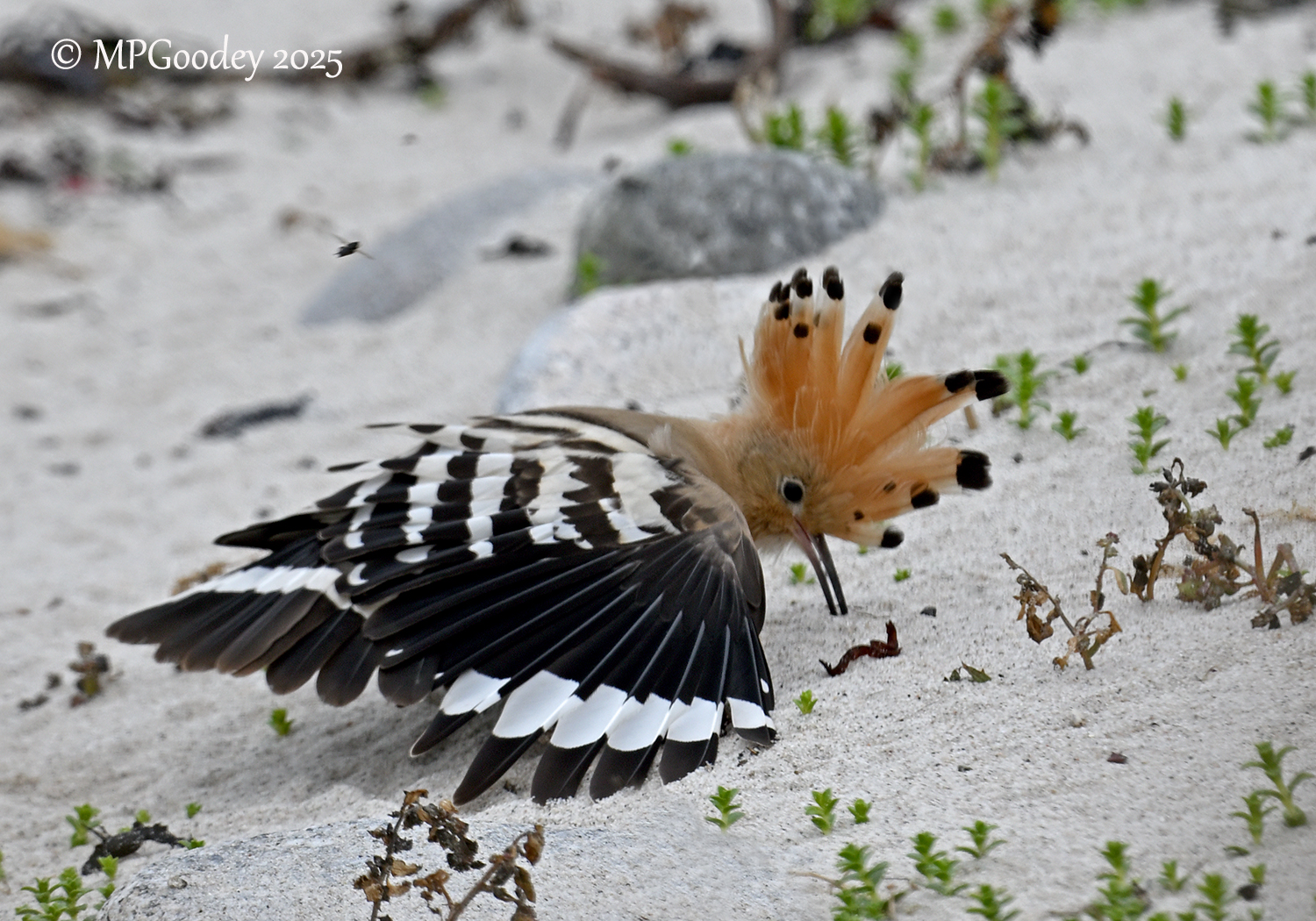
A shade over a dozen Wryneck
The first of the autumn’s Waxwing was seen on 15th at Bank Island (North Yorkshire).
Recent Short-toed Lark remained Unst (Shetland) on 10th-15th, and in Norfolk at Snettisham on 10th-11th; and a new bird was seen on Gugh (Scilly) on 15th.
A Red-rumped Swallow was seen in Kent on 14th a Graveney Marshes.
Numbers of Yellow-browed Warbler this week picked up a little, with just shy of 350 birds noted across Britain and Ireland.
With them came some scarcer fare – a Pallas’s Warbler at Carminowe (Cornwall) on 9th-10th, another at Landguard NR (Suffolk) on 14th-16th, a second Suffolk bird at Shingle Street on 16th, and a bird in Norfolk at Waxham on 16th…
…and a Hume’s Warbler at Warham Greens (Norfolk) on 15th-16th.
Enhanced numbers of Radde’s Warbler were seen lately, with birds trapped and ringed on Bardsey (Gwynedd) on 11th, and at Brownstown Head (Co.Galway) on 14th; and seen at Warham Greens (Norfolk) on 13th-14th, Reculver (Kent) on 13th, Cape Clear (Co.Cork) on 14th-16th, and Sheepcote Valley (East Sussex) on 14th. A probable was seen on St Mary’s (Scilly) on 15th.
A Dusky Warbler was trapped and ringed on Lundy (Devon) on 10th, and another seen at Walsey Hills NOA (Norfolk) on 14th-16th. Further birds were reported from Norfolk on 15th at Warham Greens and North Point Pools, while the Lundy bird remained on the isle at the week’s close on 16th.
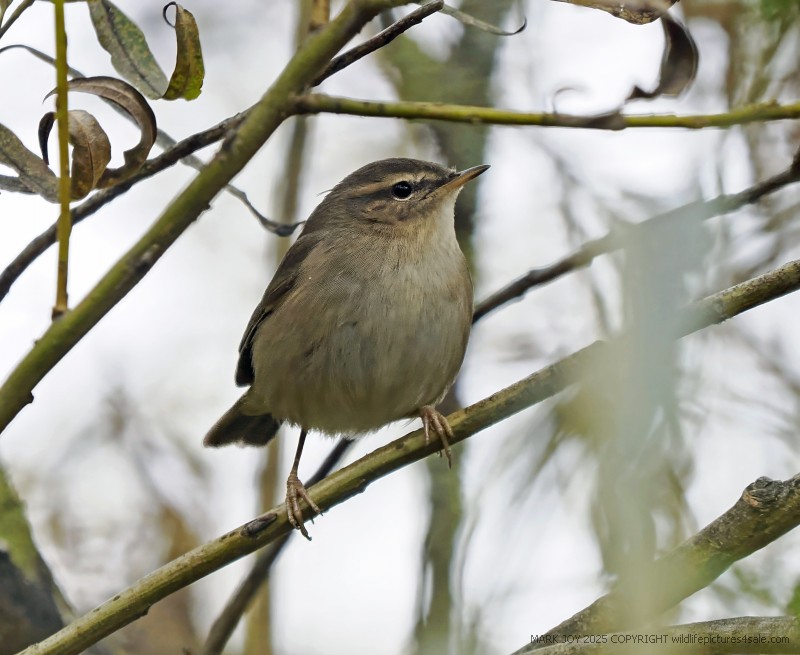
The Western Bonelli’s Warbler remained at Old Head of Kinsale (Co.Cork) on 10th, with a bird also seen in Co.Cork at Mizen Head on 12th-16th.
Scilly provided Greenish Warbler on St Agnes on 10th, and St Mary’s on 12th, 14th and 15th. An Arctic Warbler was also on St Agnes on 10th; while another settled on Inishbofin (Co.Galway) on 13th-15th.
Shetland retained its recent Western Subalpine Warbler at North Levenwick on 10th-16th.
A dozen Barred Warbler were again logged this week, with two in Lerwick (Shetland) on 11th-12th at least notable.
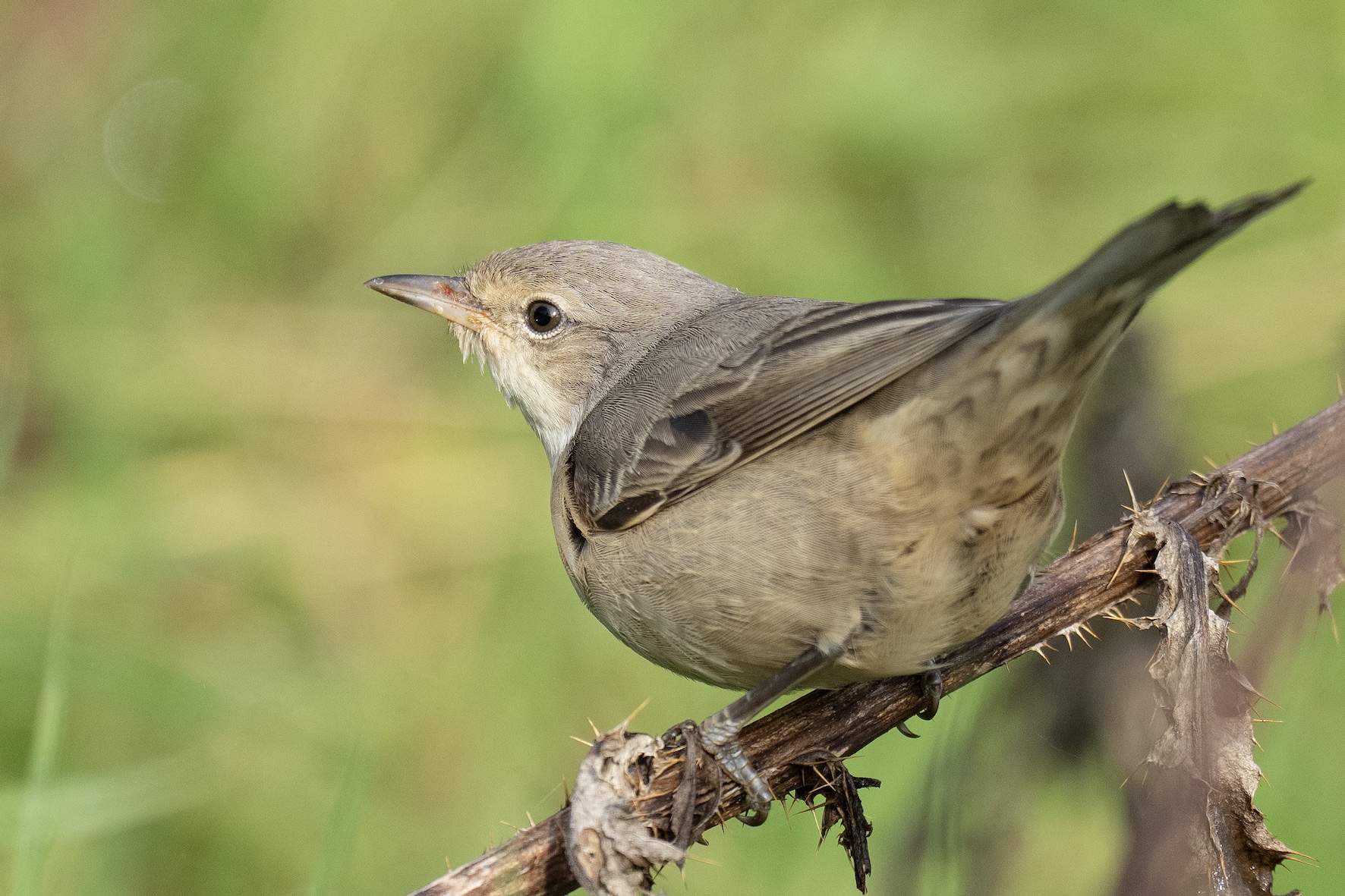
On Scilly, the Rose-coloured Starling remained on St Mary’s on 10th-14th; another was seen on Lundy (Devon) on 10th; and a further bird at Land’s End (Cornwall) on 13th-14th. An Irish record ended sadly, a bird found at Knockroe (Co.Cork) on 12th and taken into care having died the following day; an extant bird was present on Inishmore (Co.Galway) on 16th.
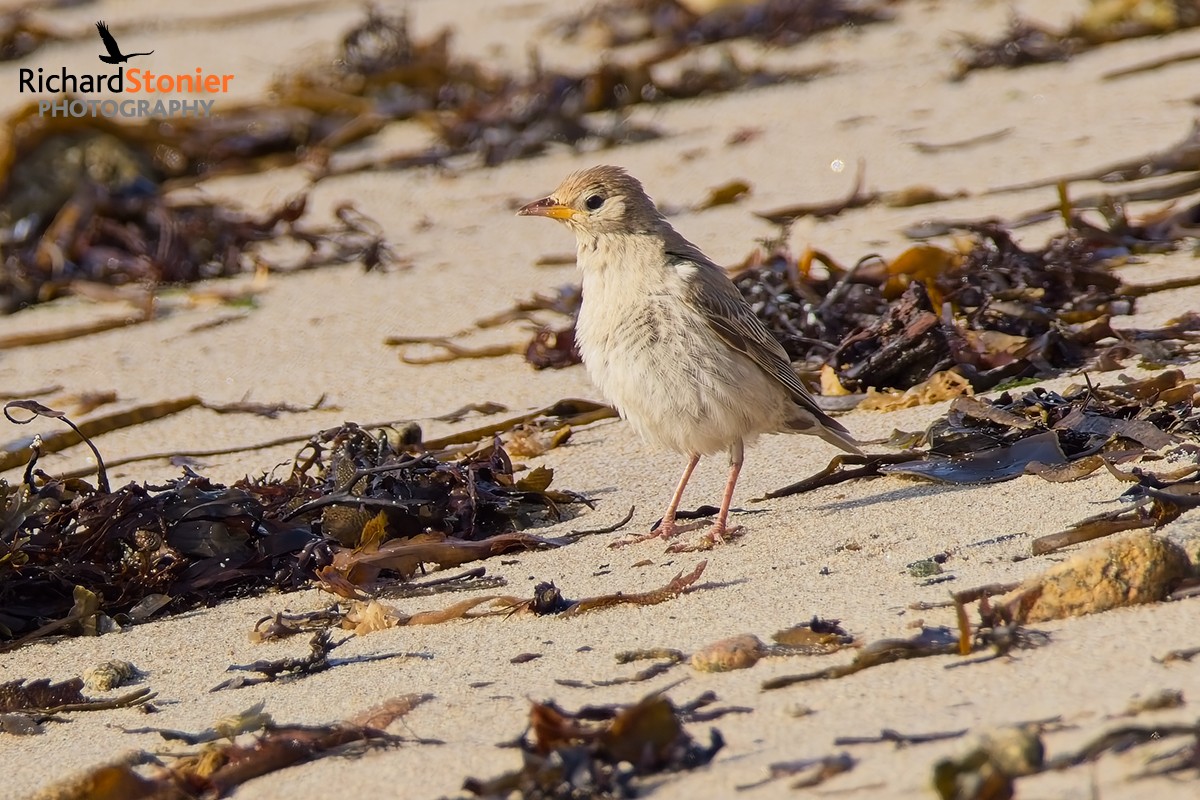
A mere half dozen or so Common Rosefinch spoke volumes of generally diminished eastern passage – birds were noted on St Mary’s (Scilly) on 10th-16th still; in Shetland in Lerwick on 11th-12th, on Yell on 12th-13th, and on Unst on 15th; trapped and ringed on Cape Clear (Co.Cork) on 10th; seen on 11th on Clare Island (Co.Mayo), and Tory Island (Co.Donegal); and at Rascarrel (Dumfries & Galloway) on 16th.
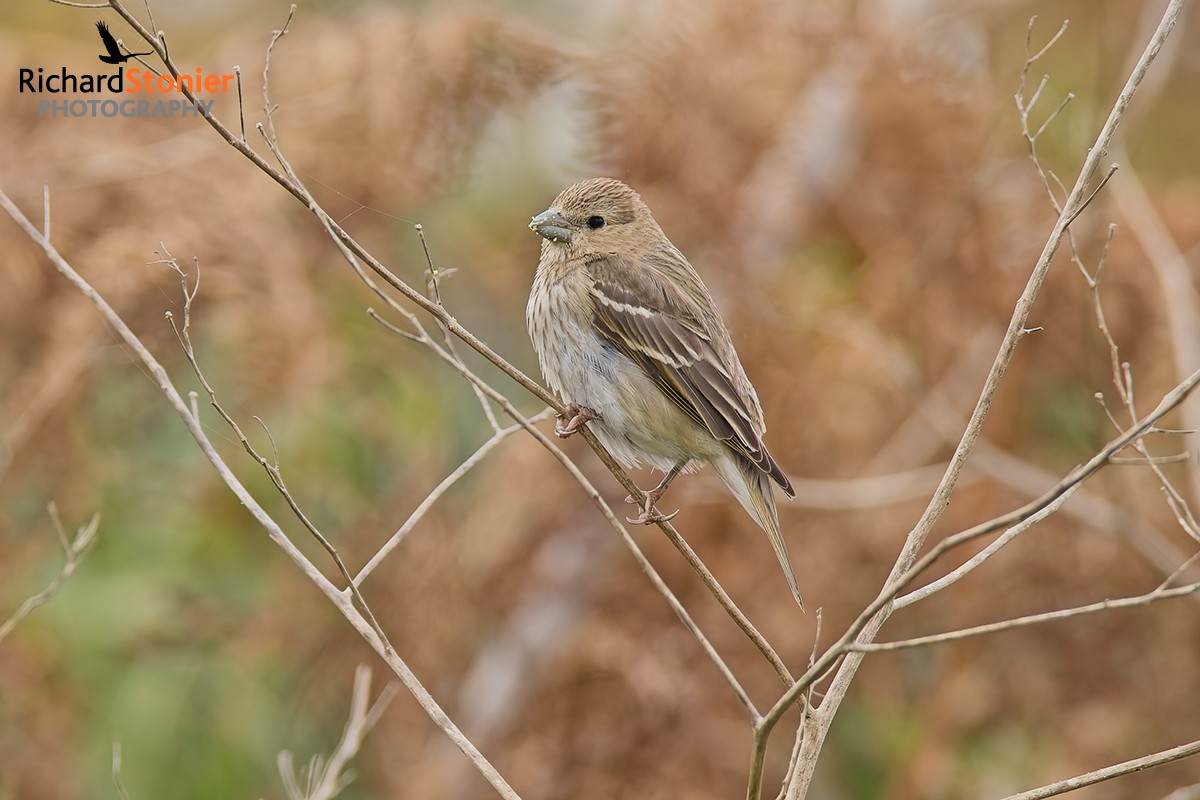
A Serin was noted passing over Dungeness (Kent) on 12th.
An Ortolan Bunting overflew Trevescan (Cornwall) on 11th.
Bigger bunting excitement came in the form of Black-headed Bunting on North Ronaldsay (Orkney) on 10th, and Inishmore (Co.Galway) on 15th.
Shetland gave us Rustic Bunting on Mainland at Hoswick on 11th-12th; a Scilly bird was present on St Agnes on 11th; and another on Isle of May (Fife) on 13th.
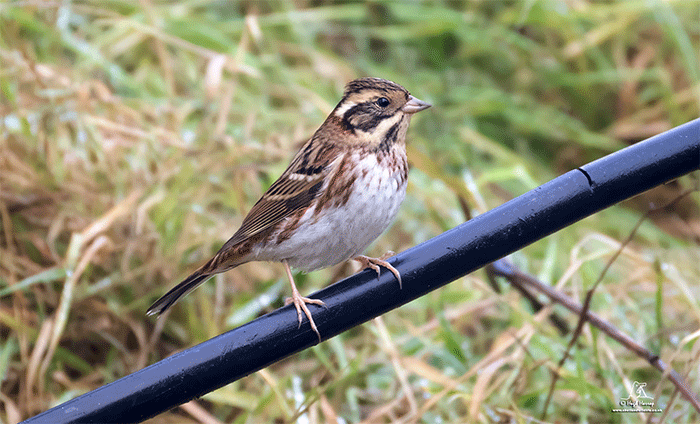
Which just leaves us Little Bunting with which to wrap up the week – one was trapped and ringed on St Mary’s (Scilly) on 11th; another was seen on St Agnes on 14th; one settled at Spurn (East Yorkshire) on 11th-12th; a Shetland Mainland bird was present at Vidlin on 11th; a bird found Bardsey (Gwynedd) on 15th-16th; one at Brotton (Cleveland) on 16th; and a probable was noted over Sandy (Bedfordshire) on 13th.
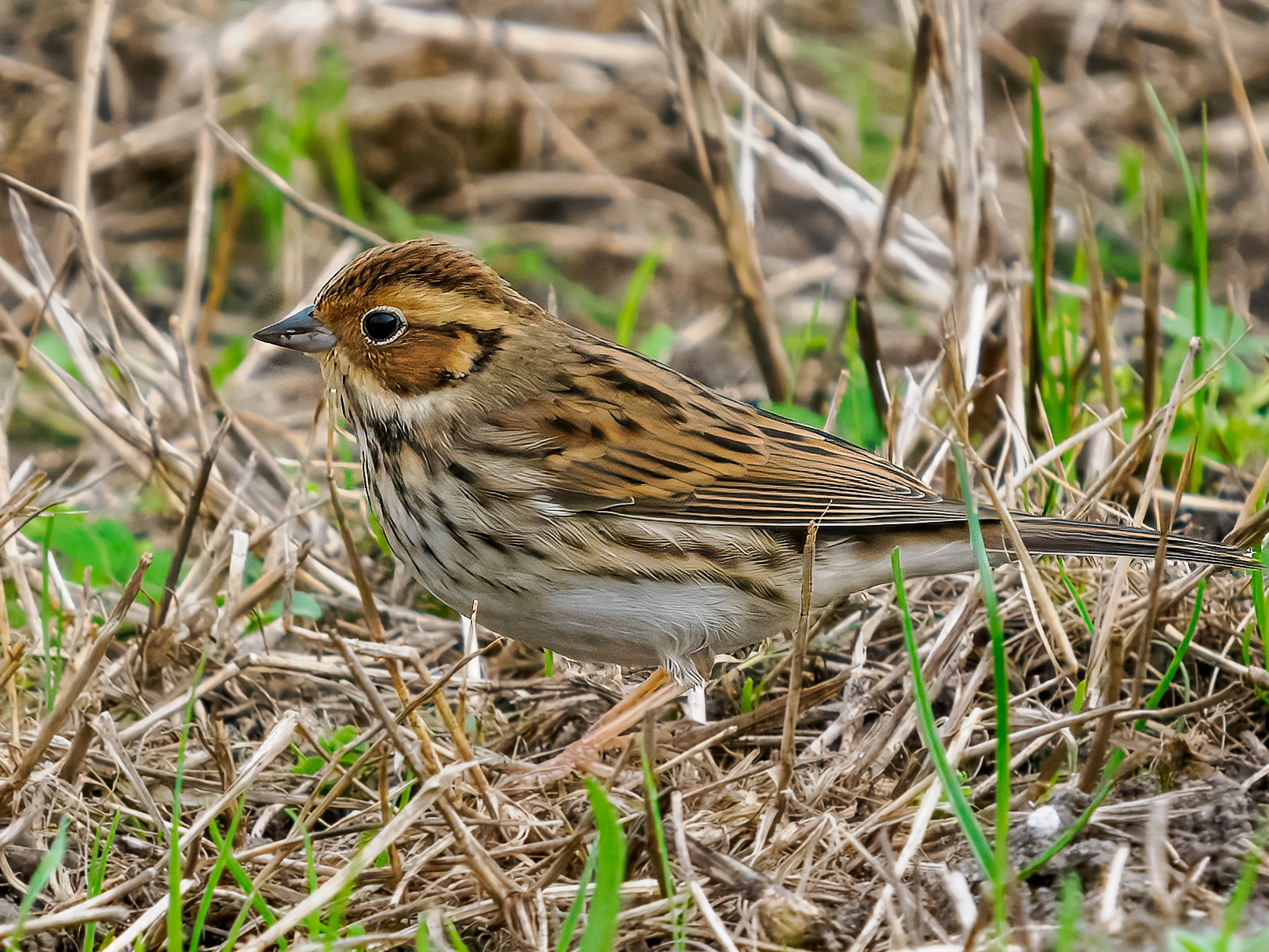
Potentially the most disruptive overseas news this week for British birders, should a bird make it again to our shores, came from Sweden, where a Little Whimbrel was present at Borgholm on 11th. There can’t be many bigger blockers now residing on the British list…
A Swainson’s Thrush was found on 15th in Norway at Røst.
Iceland’s recent good run continued this week with a Hermit Thrush at Floi on 12th; a Rose-breasted Grosbeak at Kopavogur on 12th; and a Myrtle Warbler at Eyrarbakki on 12th-15th. A White-winged Scoter was seen on 15th off Orfirisey.
On Jersey, the Bay-breasted Warbler remained present on 10th-11th.
A Forster’s Tern was seen in France at Pleuven on 12th, and a Steppe Eagle on 15th at Kerhermen. At least one American Pipit remained on Ouessant on 15th.
The returning drake Spectacled Eider remained in the Netherlands this week off Texel on 11th-16th, and the Pygmy Cormorant at Natuurpark Lelystad on 15th; while a Siberian Rubythroat was a prize find at Groote Keeten on 10th.
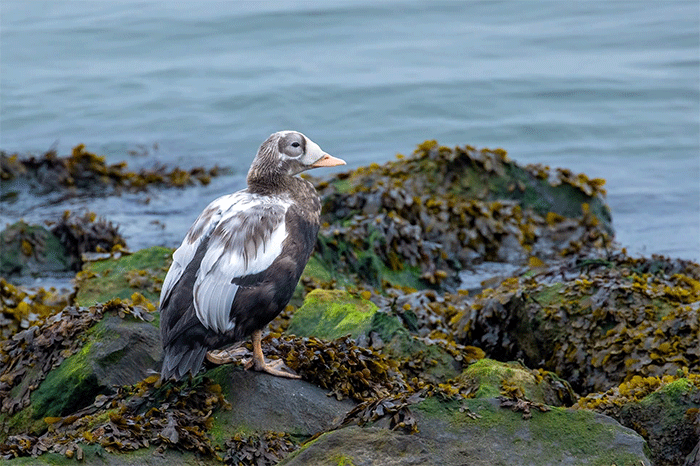
A Red-footed Booby was seen in Portugal on 12th, and again on 14th-15th at Baleeiro Harbour.
To the region’s outer limits now… A Himalayan Vulture was seen in Kuwait at Alkhoweisat on 11th.
And a Three-banded Plover in Georgia at Batumi on 13th.
While on Cape Verde, the Willet remained on Boa Vista on 13th; and a Yellow-billed Cuckoo was seen on Sal on 11th.
Finally, predictably, still plenty of American interest in the Azores… Corvo enjoyed two Ruby-crowned Kinglet; and a supporting cast of American Goshawk, Cape May Warbler, Black-and-white Warbler, Tennessee Warbler, Northern Parula, Chestnut-sided Warbler, Prothonotary Warbler, Yellow-billed Cuckoo, Red-eyed Vireo, Baltimore Oriole, and Indigo Bunting…
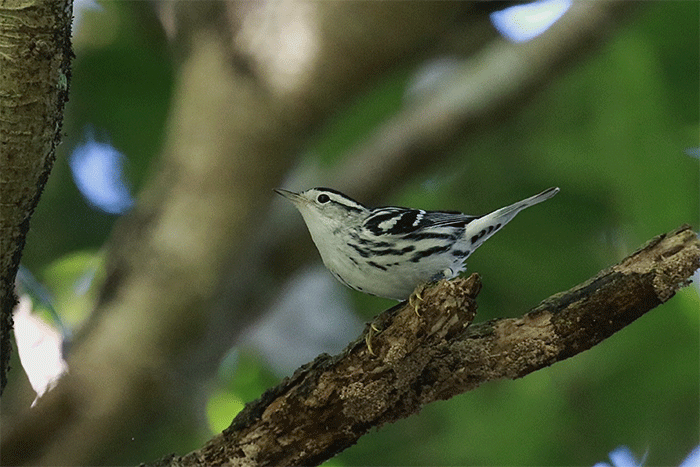
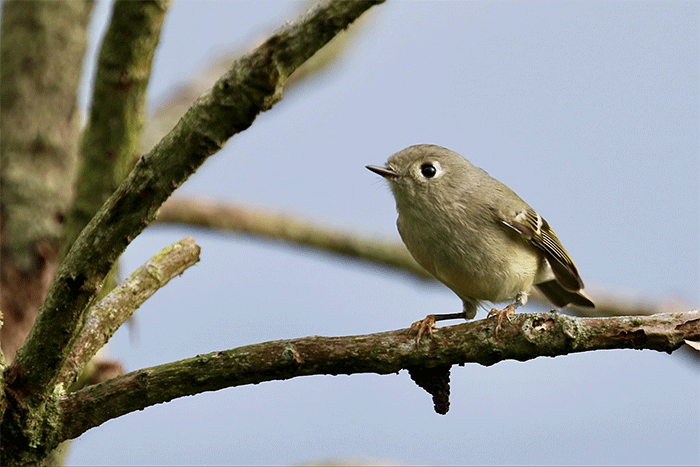
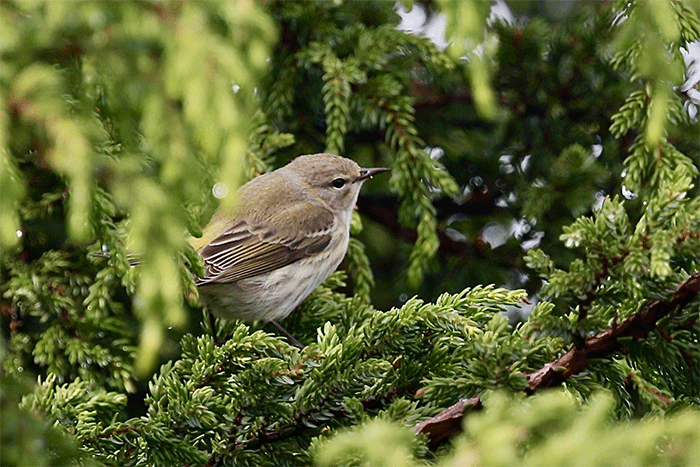
…while Flores generated sightings Dickcissel, Yellow-billed Cuckoo, Red-eyed Vireo, Black-and-white Warbler, and Common Yellowthroat; and the Snowy Egret remained on Sao Miguel on 16th.
The coming week is a tantalising one, with some significant past eastern quality with which to whet our appetites – buntings alone boast Chestnut, Chestnut-eared, Pallas’s Reed, and Yellow-browed….
…while we’ve also historic records of the likes of both Rufous-tailed and Siberian Blue Robin.
Any of the above would do very nicely indeed, thank you. However, with eyes to last week in the Netherlands, and bearing in mind we’ve approaching 10 past records of Siberian Rubythroat owing themselves to the week ahead, it’s certainly one to bear in mind…
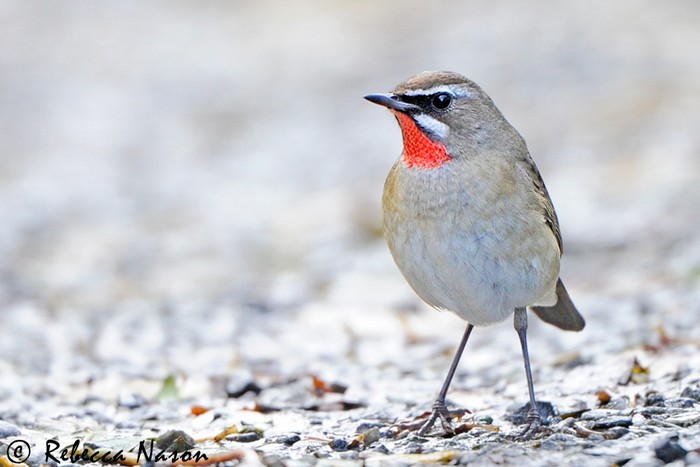
Get Breaking News First
To get all the latest breaking bird news as it happens, download BirdAlertPRO for a 30-day free trial – no payment details required – and access exclusive first-time subscriber offers.
Jon Dunn
17 October 2025
Many thanks to all this week's contributors for your photos and videos
Share

















